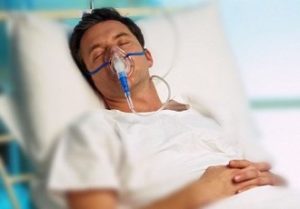 FEATURE ARTICLE by DoctorOnCall.com.my
FEATURE ARTICLE by DoctorOnCall.com.my
Sexually transmitted diseases (STDs) are infections which can pass from one infected person to another healthy person through sexual activity. In most cases, it equally affects both men and women. However, women tend to suffer more serious health consequences compared to men. In addition, pregnant women exposed to STDs may pass on serious health problems to their babies.
The most common STDs that we hear about in our everyday lives are Human Immunodeficiency Virus (HIV), syphilis, gonorrhoea and chlamydia. Effective treatment is available for these infections which are mostly bacterial in origin. However in some cases, the infection can be difficult to treat as the bacteria or the virus can stay in the body for a long time without showing any symptoms, otherwise known as a long latent period.
STD Statistics in Malaysia
HIV – Malaysia’s first case of HIV was recorded in 1986. The disease spread at an alarming rate soon after. By 2000, the country recorded over 38,000 cases. It was only around 2002 that we seemed to get a better grip of the epidemic after many dedicated strategies were put into place. The most effective of those strategies was the needle exchange program that was targeted at injecting drug users.
The annual number of reported new HIV cases has been on a steady decline from a peak of 6,978 in 2002. In 2013, there were 3,393 new HIV cases reported to the Ministry of Health, approximately half of what was reported in 2002, with an average of 9 new cases each day. The notification rate of HIV continues to experience a decrease from 28.4 in 2002 to 11.4 cases per 100,000 population in 2013. However, statistics still show that only slightly less than half of the patients diagnosed with the condition are consistently on treatment for the condition, a situation that is much less than ideal.
Syphilis – Underreporting is prevalent for this condition and it is estimated that only 9 to 11% of cases diagnosed make it into the national statistics. The reported incidence rate of syphilis has declined from 7.68 per 100,000 population in 2000 to 6.03 in 2001, 3.44 in 2005, and 2.76 in 2006. The prevalence of syphilis was found to be much higher in specific populations, such as sex workers.
Gonorrhoea – Fortunately, gonorrhoea also shows a decreasing trend. In the year 2000 it was 5.74 per 100,000 population, dropping down to 2.06 in 2005 and further reduced to 1.6 per 100,000 population in 2006.
Key symptoms and treatments of common STDs
 Chlamydia
Chlamydia
Chlamydia is a sexually transmitted disease caused by the bacteria Chlamydia trachomatis. Any type of sexual contact (oral, vaginal or anal) with an infected person can spread the infection as it can be present in cervix, urethra, vagina and rectum. People who are sexually active, especially with multiple partners, are at high risk.
Common symptoms of chlamydia in women are:
- Vaginal discharge
- Burning sensation during urination
- OR no symptoms at all, which is quite common.
Common symptoms of chlamydia in men are:
- Discharge from the tip of the penis (white, thick, cloudy or watery)
- Burning sensation, pain or discomfort during urination.
- Pain in and around the testicles.
- OR no symptoms at all
Gonorrhoea
 Gonorrhoea is caused by the bacteria Neisseria gonorrhoeae. This bacteria grows in the warm, moist area of the reproductive tract. In women, it can be found in cervix (opening to the womb), uterus (womb), and fallopian tubes (egg canals). In both men and women, it can thrive in the urethra (the tube that carries urine from the bladder to external part of body). The bacteria can also be found in the mouth, throat and anus. Therefore any contact with the infected area can spread the infection. Typically, it takes a week to show the symptoms after the transmission.
Gonorrhoea is caused by the bacteria Neisseria gonorrhoeae. This bacteria grows in the warm, moist area of the reproductive tract. In women, it can be found in cervix (opening to the womb), uterus (womb), and fallopian tubes (egg canals). In both men and women, it can thrive in the urethra (the tube that carries urine from the bladder to external part of body). The bacteria can also be found in the mouth, throat and anus. Therefore any contact with the infected area can spread the infection. Typically, it takes a week to show the symptoms after the transmission.
Common symptoms of gonorrhoea infection in men are:
- First noticeable symptom in men is often a burning or painful sensation during urination
- Increased frequency or urgency of urination
- A pus-like discharge (or drip) from the penis (white, yellow, or greenish)
- Swelling or redness at the opening of the penis
- Swelling or pain in the testicles
- A persistent sore throat
Women often do not develop any prominent symptoms, which makes it difficult to diagnose. Women may show symptoms which are difficult to distinguish from other infections like vaginal yeast.
Women with gonorrhoea may develop symptoms of:
- Discharge from the vagina (watery, creamy, or slightly green)
- Burning sensation during urination
- Frequent urination
- Heavier periods or spotting
- Sore throat
- Pain upon engaging in sexual intercourse
- Sharp pain in the lower abdomen and fever
Syphilis
 Syphilis is caused by the bacteria Treponema pallidum. It has four stages – primary, secondary, latent and tertiary – and each stage is associated with its own signs and symptoms.
Syphilis is caused by the bacteria Treponema pallidum. It has four stages – primary, secondary, latent and tertiary – and each stage is associated with its own signs and symptoms.
Primary stage: Sores at original site of an infection (genitals, anus, rectum, or mouth).
Secondary stage: Skin rash, swollen lymph nodes and fever.
Latent stage: No sign and symptoms.
Tertiary stage: It is usually diagnosed by a doctor as it is associated with severe medical problems. It can affect the heart, brain, and other organs of the body.
Ways to Reduce Risk of STDs
As we know, prevention is better than cure. You can avoid the risk of sexually transmitted disease in several ways and prevent it with the following methods:
- Stay with one sexual partner
- Get vaccinated – early vaccination before sexual exposure can play a great role in preventing certain type of STDs. Available vaccines are human papillomavirus (HPV), Hepatitis A and Hepatitis B
- Get tested as soon as possible upon high risk exposure and start treatment early
- Always use condoms and dental dams
- Avoid excess amount of alcohol & use of recreational drugs as it increases the risk of STD infections by influencing sexual behaviour
Conclusion
STDs are common in Malaysia and throughout the world. There are effective treatments available for these infections. The key thing is to seek immediate medical attention upon high risk exposure and perform regular screening which will go a long way to ensure STD related challenges are detected early.
Remember, it is better to be safe than sorry!
Dr Andrew Yap runs THE RED CLINIC focusing on family medicine with a special interest in sexual health. In his spare time, he is an accomplished drummer with the Paperplane Pursuit.

DoctorOnCall.com.my is Malaysia’s first & most comprehensive tele-medicine or online clinic platform which connects Chat, Voice & Video Calls to allow Patients to connect with Drs for on-demand & convenient medical consult. We also provide prescription & medication delivery to home & offices. Contact our doctors at www.doctoroncall.com.my to get your consultation done today!
